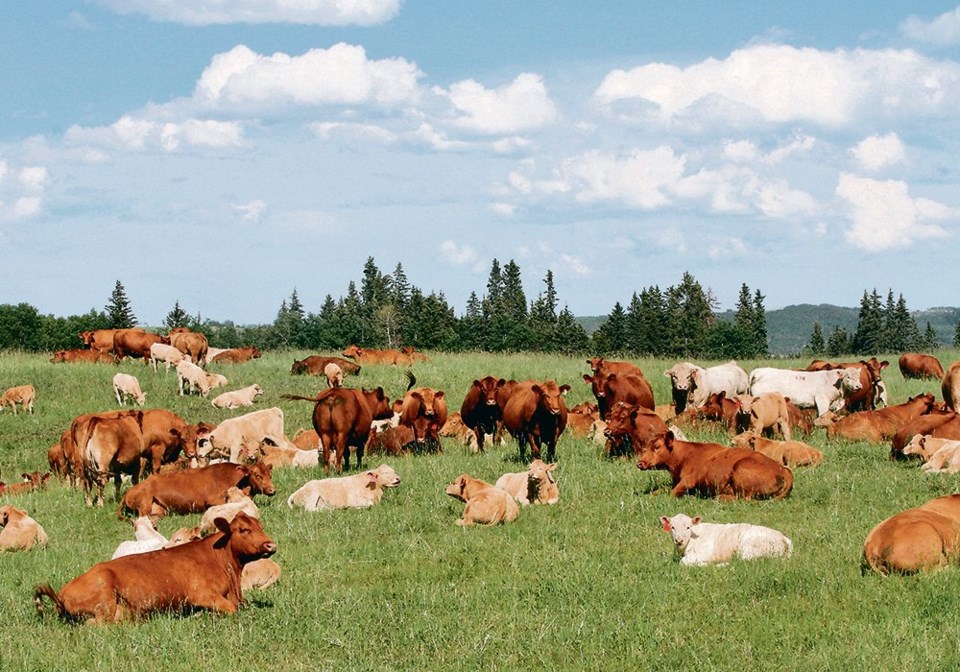This year’s drought is hurting all producers in affected areas, but those in the livestock sector are taking the brunt of it.
Grass is burning up in the heat while the price of feed continues to increase as drought reduces feedgrain supplies.
In Alberta, the provincial government is urging producers to use available water-related programs, as well as business risk management programs offered by Agricultural Financial Services Corp.
The government has asked AFSC to double the low yield threshold for crop insurance to allow alternative uses of crops for feed.
In Saskatchewan, the provincial government is making up to $70 million available to help offset the “extraordinary costs” of feeding animals and maintaining breeding herds.
Eligible producers will receive up to $80 per head to maintain breeding stock.
Alberta, Saskatchewan and British Columbia await a federal government decision to trigger assistance through the AgriRecovery program, which was last used in the 2021 drought year. A decision hadn’t been made as of press time for this issue, but a positive reply is anticipated soon.
All assistance is appreciated, of course, but many cattle producers are uncomfortable with making continual requests for help from government.
Brodie Haugan, chair of Alberta Beef Producers, recently said as much during the Canadian Beef Industry Conference in Calgary.
He said changes are needed to agricultural disaster relief and business risk management programs to better help beef producers in an era of increasing weather extremes. Producers can’t look for payouts from the federal and provincial governments every year to bail them out, he added.
Haugan said discussions are ongoing about changing AgriStability because there are many holes in the program when it comes to assistance for beef producers and there is little uptake or confidence in the current system.
Better risk management programs are needed for livestock producers so AgriRecovery doesn’t have to be activated every other year.
But that is part of a bigger discussion about how to save an industry in crisis. Recent trade agreements haven’t resulted in the expected benefits for the cattle industry. Public acceptance of the sector is growing increasingly tenuous as the less informed blame it for contributions to greenhouse gas emissions.
Domestic cattle numbers continue to shrink and it’s certainly questionable whether a new generation of ranchers will step up as the older generation retires, given these challenges and others.
Health of the industry is not just about economics. There’s a glaring green ecological reason, too.
Tim McAllister, an Agriculture Canada livestock researcher, argues in this issue that the biggest source of greenhouse gas emissions from agriculture comes from the conversion of grasslands to cropland.
Numerous studies have shown that native prairie grasslands are best protected and maintained through judicious use of grazing — and that requires a healthy and substantial beef sector. McAllister suggests one possible solution to the dilemma is to pay cattle producers to maintain grasslands. That idea has merit. Recognizing landowners’ role in ecological services has been suggested by many, and more than once.
Given the current federal government’s emphasis on programs that address climate change, it might well be an idea whose time has come.
There may be other solutions as well to protect a vital industry while also protecting the environment and mitigating climate change.
Who should lead the charge?
Karen Briere, Bruce Dyck, Barb Glen, Michael Robin, Robin Booker, Laura Rance and Mike Raine collaborate in the writing of Western Producer editorials.
You can no longer count on social media to deliver important news to you. Keep your news a touch away by bookmarking SASKTODAY.ca's homepage at this link.
Here's why you should bookmark your favourites.
Subscribe to SASKTODAY.ca newsletter to get our daily news to your inbox.




